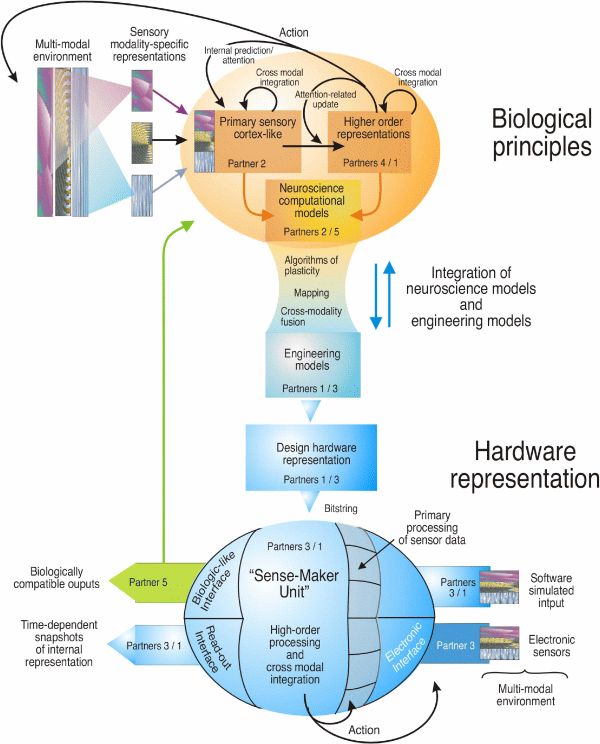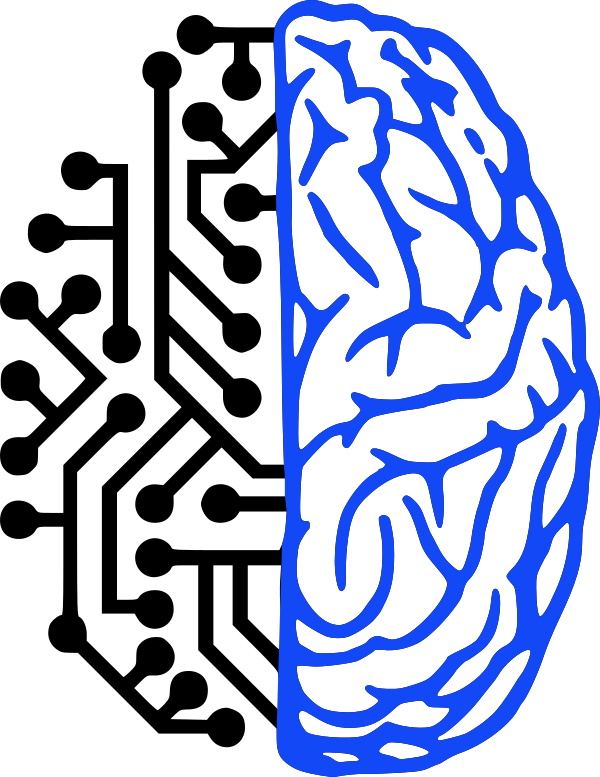In the SenseMaker project European groups from the fields of computer science, engineering, physics, psychology and neuroscience are working in a close collaboration with the goal to conceive and implement electronic architechtures that can merge sensory information from different modalities into a unified perceptual representation of the environment.
The project is funded by the European Commission in the framework of the Information Society Technologies (IST) programme. Within this programme Future Emerging Technologies (FET) and quantum information processing. SenseMaker belongs to the first approach and is funded in the framework of the Life-Like Perception Systems (LPS) call.
The SenseMaker collaboration consists of the following groups:

The picture above shows a graphical representation of the different tasks adressed within the SenseMaker project ranging from basic research on biological systems (top) to the realisation of artificial ones (bottom). The task of the Heidelberg group is to design and build a highly complex mixed-signal VLSI implementation of a neural network. The conceived system is fully scalable and suited to accommodate different custom made neural network chips ranging from perceptron architectures with binary neurons to time coded networks closely modelled after the biological example.
Read on with: Overview of the Sensemaker system.
Electronic Visions Group – Prof. Dr. Johannes Schemmel
Im Neuenheimer Feld 225a
69120 Heidelberg
Germany
phone: +49 6221 549849
fax: +49 6221 549839
email: schemmel(at)kip.uni-heidelberg.de
How to find us


